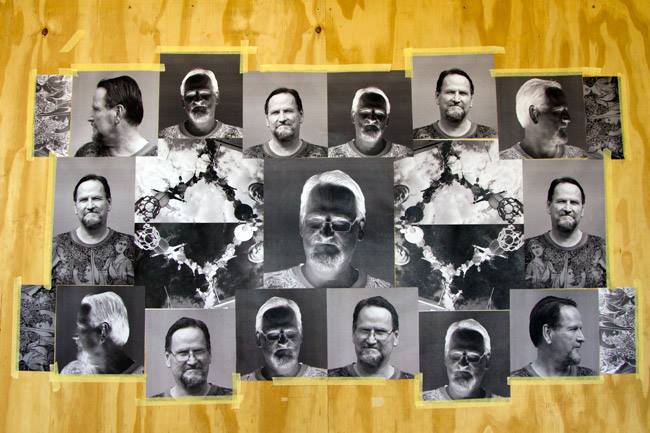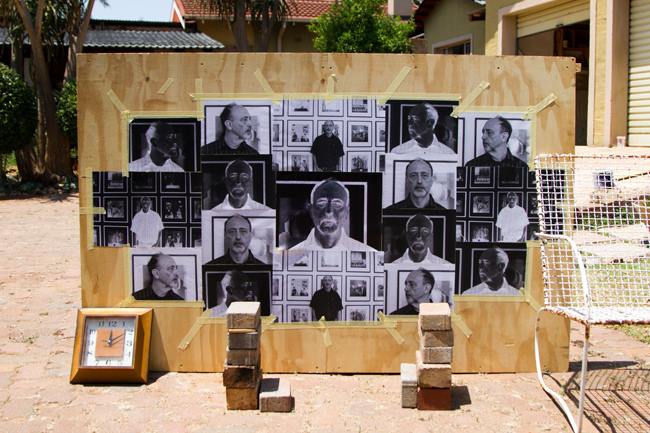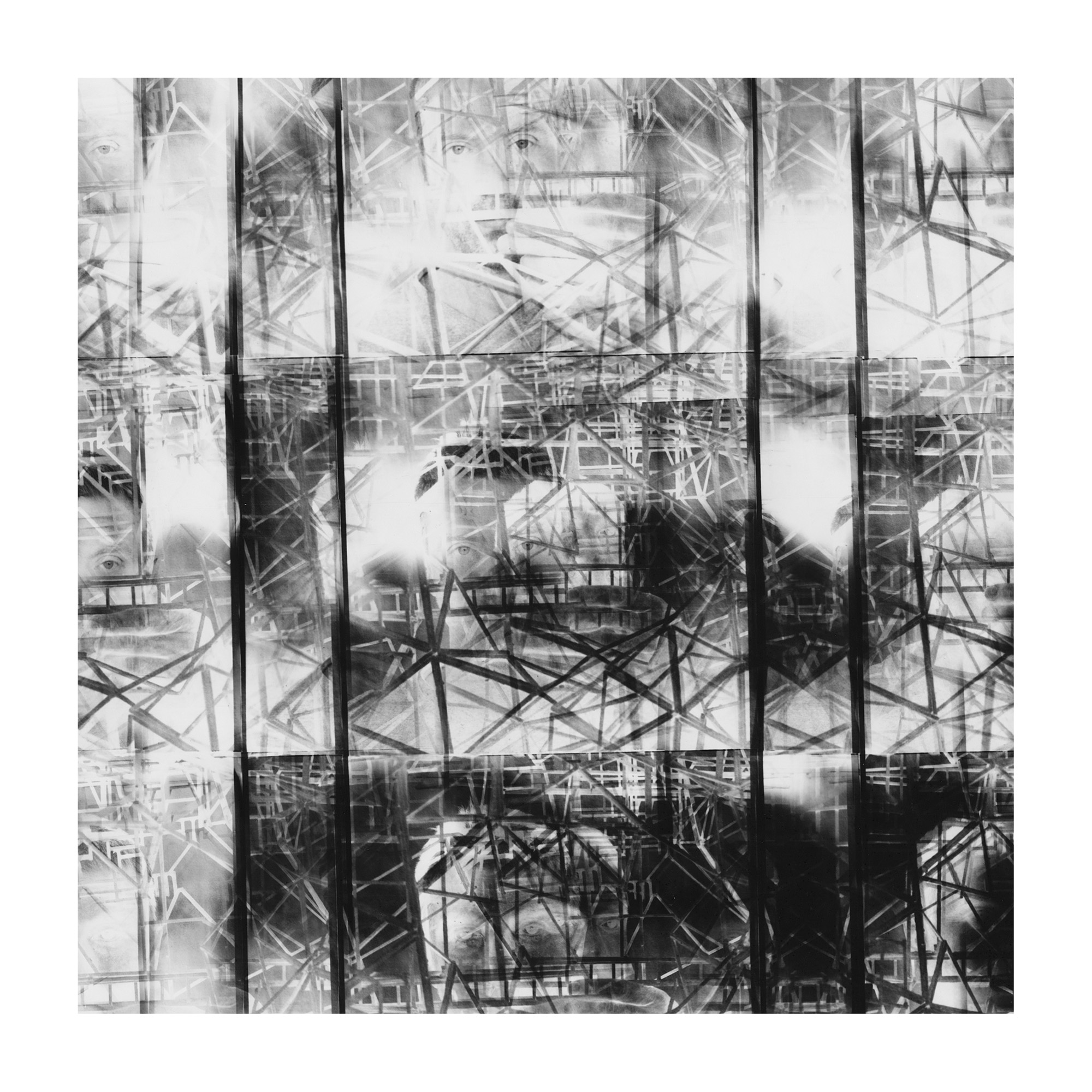
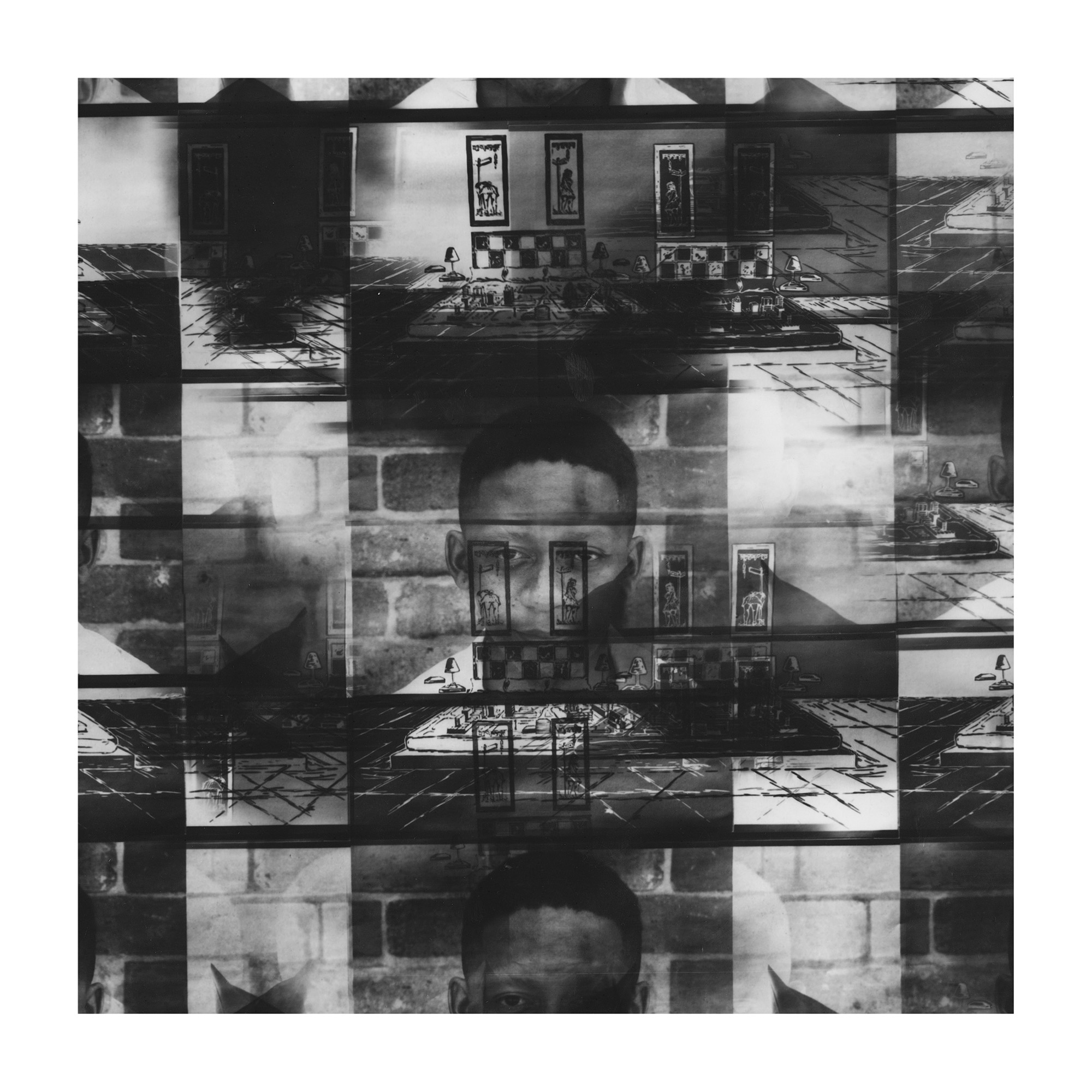
DKP: Your art practice and the use of the Camera Obscura as a device is concerned with the notion of time, is that right?
SJ: Partially, yes – witnessed, recorded and then finally witnessed repeatedly. In terms of the portraits it is about how we look at things.
DKP: So, the portraits explore perception and interpretation?
SJ: Yes – the perception of the subject, in this case the artist – by using more than one image as well as the negative and the positive of those images for my source material, I was hoping to reveal something else of the subject that was more than we allow ourselves to think.
DKP: Would you say that perception is unstable and/or disruptive? And how does the idea of time, its flow, tie in with that?
SJ: Well, we have a perception that comes from within that comes from the viewer and then there is also perception that comes also from within and that is from the subject. All these perceptions involve preconceived ideas of what and what should not be. These are informed by our upbringing, our histories, our current and past environments, the media etc. I have often heard people use the quote, “There is no truth. There is only perception” for justifying their viewpoint of the world. I say bollocks, truth is independent of perception, it is our presence that interferes with and causes truth to be muddied. Our minds are geared to look for patterns; it is partly due to this that we construct personal truths, but they are not true. We may take them as personal truths but that does not make them true. Saying that it is your personal truth does not make it true. An experience, yes; a perception, yes; a truth, no. Because, of who we are, no matter how hard we like to stick to the facts, we are unable to convey anything with absolute truth. My view point of what truth should be may be considered rather binary and simplistic, reducing it to a state of yes or no, but then isn’t that what we want when we are looking for the truth. When we look for the truth we want the absolute facts. So yes, perception is unstable and is disruptive because it can get in the way of understanding. Your dogma, your confirmation bias may blind you to answers around you, stopping you from seeing or even from beginning to understand what may indeed be true.
On the other hand it can also be beneficial. You could come in with new ways or new understandings that could help with whatever your task is or what the people around you are trying to understand, but that does not make you an oracle of the truth. You can only share what you know, your knowledge and experiences, but because you are just human, it will be always, to a greater or lesser extent, undermined by who you are.
DKP: In science, all moments of time are equally real – past, present and future: physics doesn’t make a distinction; it doesn’t see time as linear. So, could time be an illusion, even as we, or the Camera Obscura, try to capture it?
SJ: Yes, fortunately I was watching a Jim Al Kalili lecture this morning so I was able to brush up on my understanding of relativity. I am happy to say that the perception of time is purely a question of where you are and how you are moving in relation to the objects around you, and in turn how those objects are moving in relative terms to you. No two things will experience time in the same way: e.g., without Einstein’s theory of relativity our GPS satellites would be useless.
If we go back to an earlier question you asked me, “…your art practice and the use of the Camera Obscura as a device is concerned with the notion of time, is that right?”, I think that I should re- answer. Again I will say partially yes, the cameras that I build aren’t really designed to capture time, but rather a moment in time: that moment in time being the length of time it takes to make an exposure. This is true of all cameras. What makes the cameras that I build different from commercially available cameras is the fact that they have many lenses. Chantal, the camera that I have been using to make these portraits with has 50. The reason why I started to build cameras with so many lenses was because I wanted to be able take enough photographs of a single moment in time so that I would then be able to make a film from these photographs. The film would have been just of that moment in time. So, while frame by frame you would see slight variations in the landscape, time in the film would never change.
I only made a couple of very short films that lasted no more than a second. What stopped me were the pictures I was taking with the cameras. The images were landscapes that could have been said to have had aspects of the Cubist movement in them. The single view point was not there. Forms and views blended into one another to create a new reality. Each lens was giving its own view point. Each of these view points, due to the structure of the camera, blended into one another. Much like the human experience of witnessing an event each had its own story to tell. Whilst very similar, as the distances between them grew so did their narrative and perspective change.
Gordon Froud
Roger Ballen
DKP: By superimposing images of each artist over their work or vice versa, are you deliberately conflating the subject and their practice and thereby suggesting the fusion of art and life?
SJ: Am I deliberately conflating the subject and their practice? Yes absolutely – I was curious as to what the result would be. It is not often that we get to see the two together. You have the artist and then you have the work. Sometimes we forget that there has been a direct relationship between the two, that the one has created the other. I know myself; I see some of my older work and I forget that it was me who was responsible for its being. I think that it’s engaging when you do a portrait of someone like Diane, who is known for angry work – to do a portrait showing a softer side that is also a little bit playful.
DKP: You say your camera, Chantal, has 50 lenses; the multiplicity of viewpoints existing simultaneously both constructs and deconstructs reality. It’s a mode of representing reality and time that skirts the territory of quantum theory with its uncertainty principle, wave – particle duality, decoherence, superposition and circular time (consistent with relativity theory).
SJ: Yes, I have an interest in quantum physics; I have always found it intriguing how light can be both wave and particle at the same time. The following link provides a great summation of my interests in this respect:
https://www.youtube.com/watch?v=cRmbwczTC6E
DKP: Can you sum up the overall goal of your artistic practice?
SJ: Simply put: to have fun whilst exploring the magic of light.
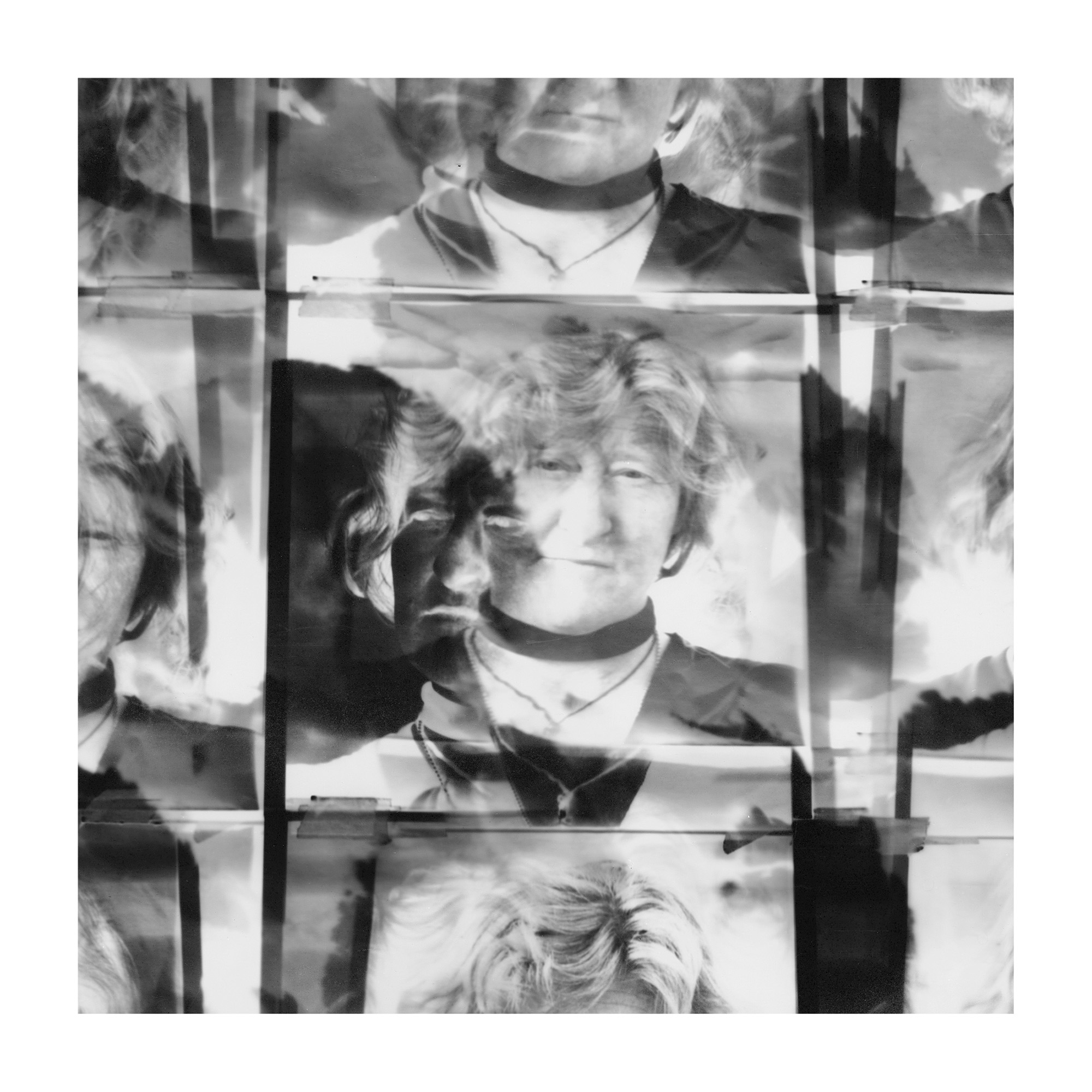
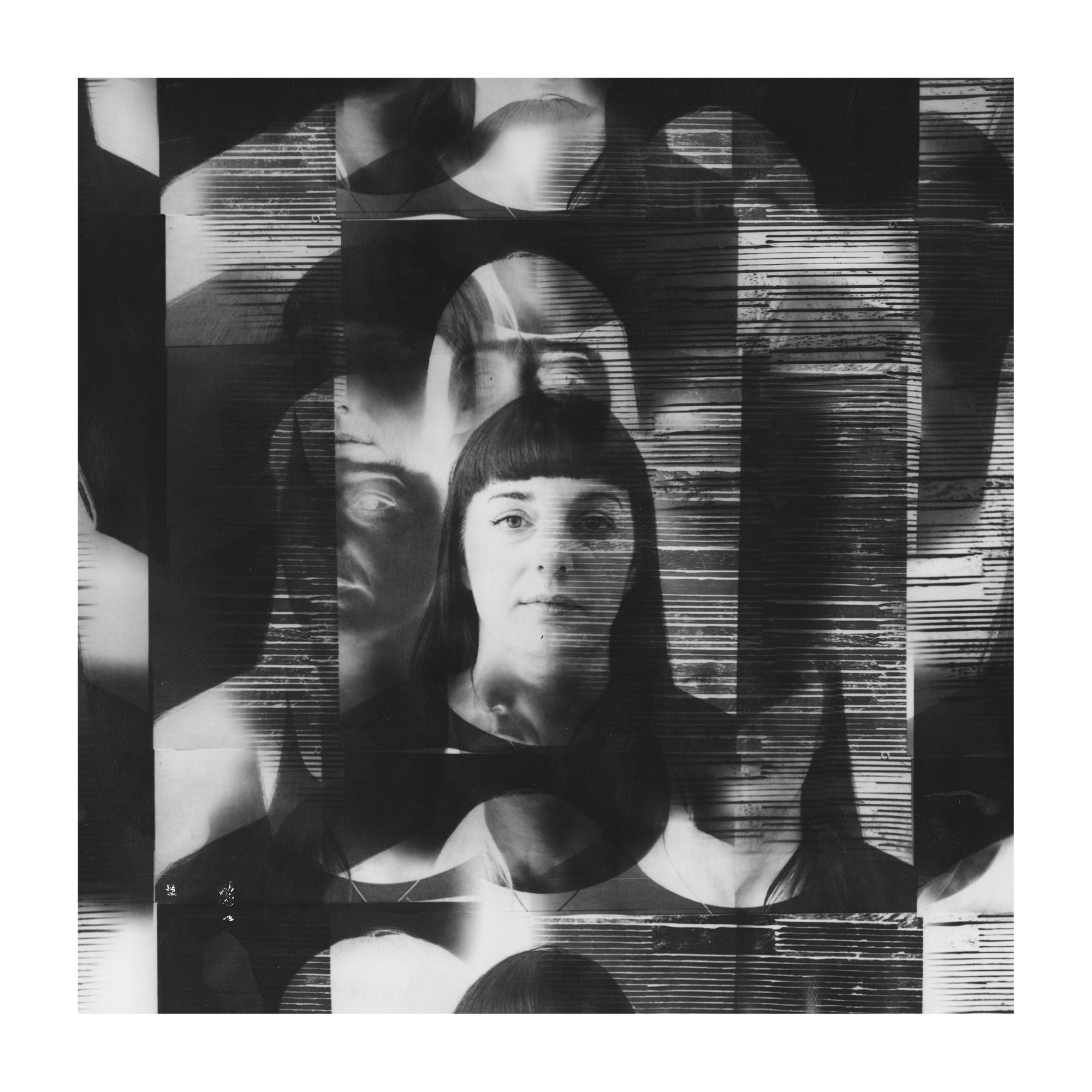
Text & posting by Linda Kocovaos
